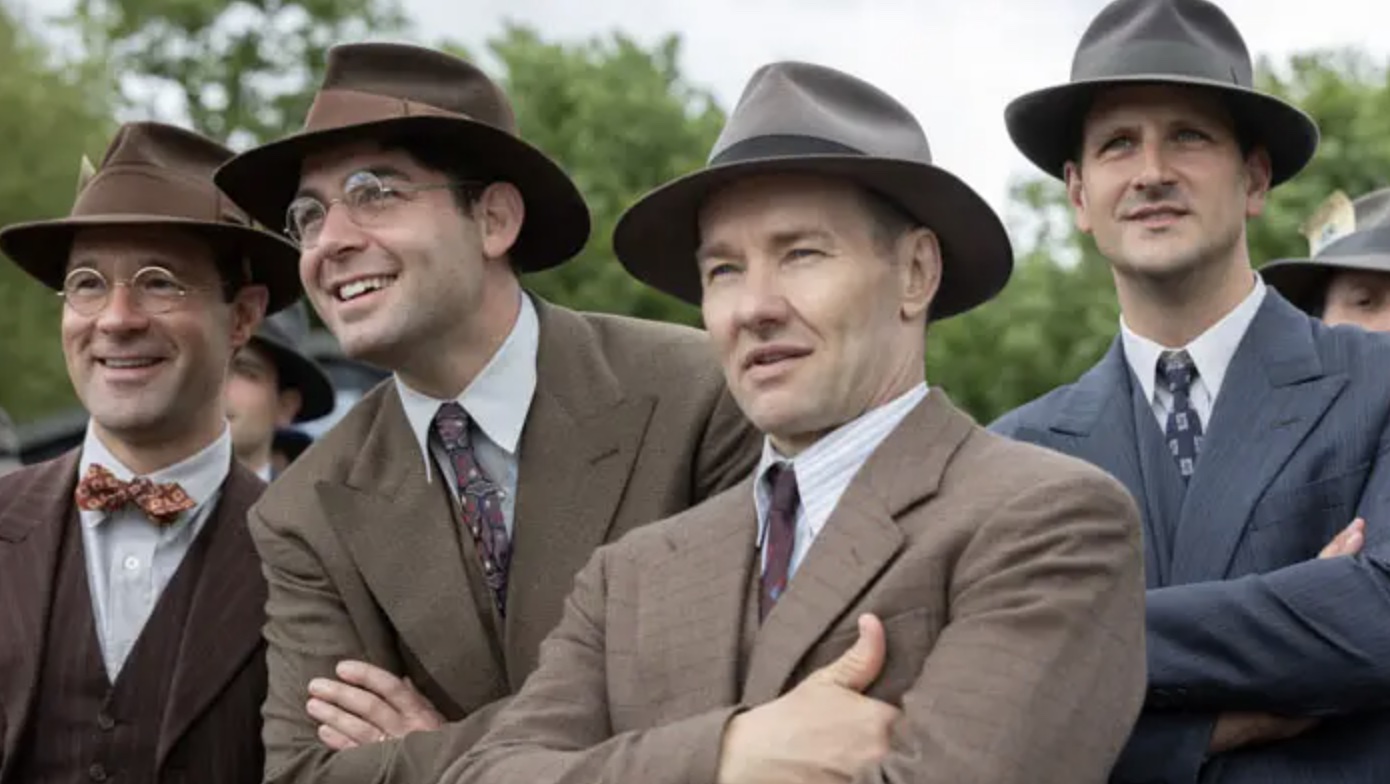In an era dominated by flashy blockbusters and CGI-laden spectacles, George Clooney’s latest directorial venture, ‘The Boys in the Boat,’ takes a bold stroke against the tide of modern cinematic trends. Bravely venturing into the waters of old-fashioned storytelling, Clooney crafts a fact-based underdog sports saga set against the backdrop of the 1936 summer Olympics in Berlin.
The film, based on Daniel James Brown’s 2013 nonfiction bestseller, spotlights the University of Washington’s junior varsity rowing crew, a group of American working-class athletes challenging the privileged Ivy Leaguers on the Olympic stage. Clooney, alongside screenwriter Mark L. Smith, serves up a cinematic blend of “Rocky” in a boat, where the battleground is not a boxing ring but the serene yet fiercely competitive waters.
At the heart of this Depression-era narrative is Joe Rantz, portrayed with depth and conviction by Callum Turner. Abandoned by his family at a young age, Joe fights not only for a spot on the rowing crew but for survival. Clooney masterfully portrays the physical and emotional rigors of crewing, elevating it beyond a mere sport to a truly Olympic event that demands perfect synchronization among teammates.
The film’s visual beauty is akin to the effortless grace of ‘Chariots of Fire,’ with Alexandre Desplat’s stirring score guiding us through the breathtaking glide of oars cutting through water. Clooney’s decision to shoot chronologically in England allows the actors to organically develop their skills, creating a seamless progression on-screen.
While the narrative primarily unfolds on the water, trouble brews on dry land, especially during the Olympics. However, historical figures like Adolf Hitler (Daniel Philptt) and Jesse Owens (Jyuddah Jaymes) are reduced to mere cameos, leaving much untapped potential in exploring the racial tensions of the time.
Clooney’s commitment to spotlighting integrity and human decency, a thread woven through his directorial career, resonates in ‘The Boys in the Boat. In a cinematic landscape saturated with sequels and superhero franchises, Clooney’s dedication to old-fashioned values becomes a refreshing ode to a bygone era of filmmaking.
The film not only celebrates teamwork but delves into the stark contrast between Ivy League privilege and the struggles of working-class rowers. The radio announcer aptly labels the regatta as a clash between “old money” and “no money,” emphasized by poignant images of the Washington students’ worn-out shoes.
As the narrative builds towards the Olympics, the movie’s momentum is fueled by euphoric cinematography, crisp editing, and a soul-stirring score. Jack Mulhern and Luke Slattery shine in their roles, complementing Callum Turner’s compelling portrayal of Joe Rantz. Peter Guinness as George Pocock, the designer of the racing shell, serves as the film’s philosophical touchstone.
In an age where the term “old-fashioned” is often used pejoratively, ‘The Boys in the Boat’ stands as a testament to the enduring power of traditional storytelling. Clooney’s adept direction, coupled with stellar performances and top-notch production values, results in a satisfying and well-acted film. In a cinematic landscape craving authenticity, “The Boys in the Boat” is a welcome reminder that sometimes, they do make them like they used to—and that’s something to be applauded and respected.
